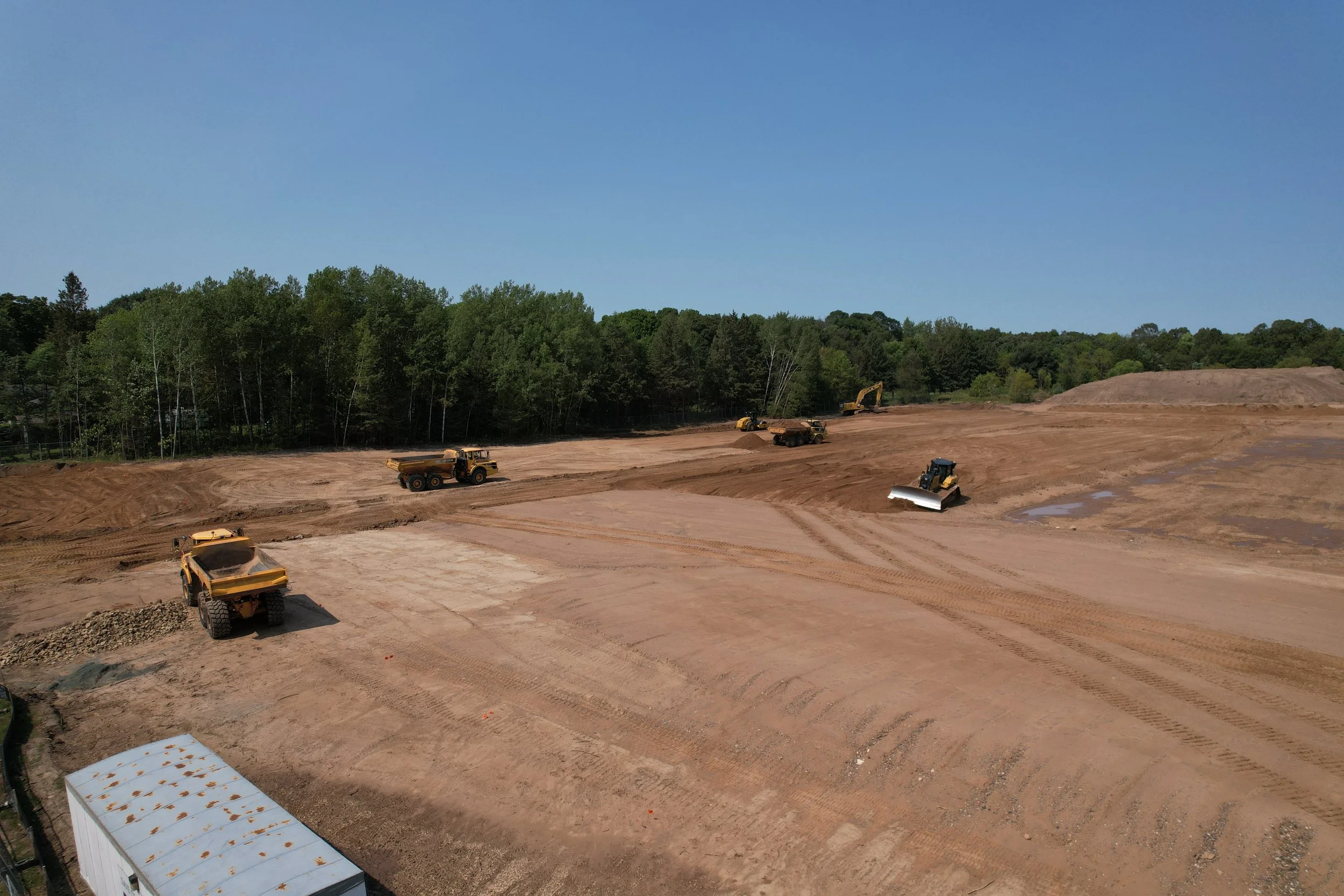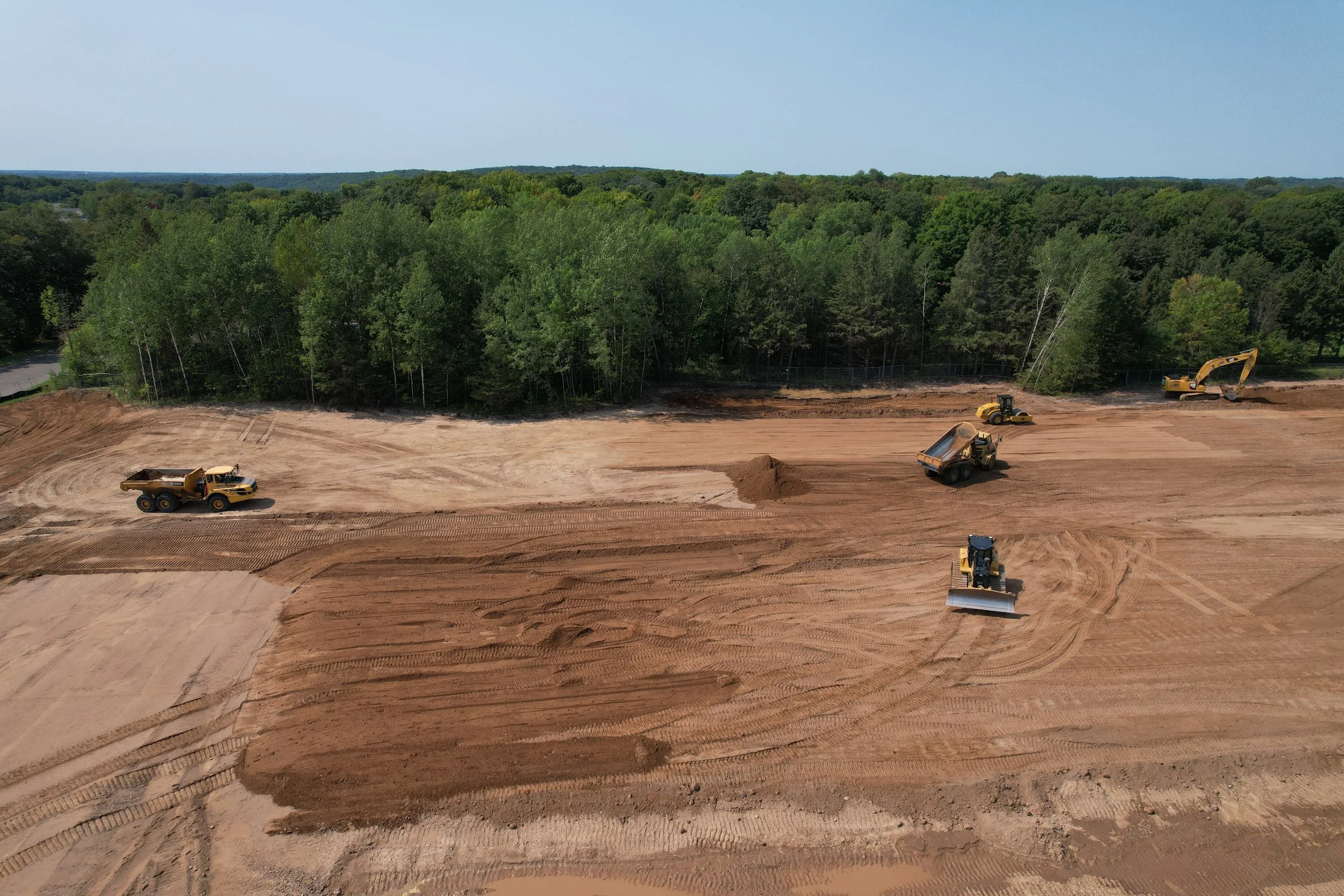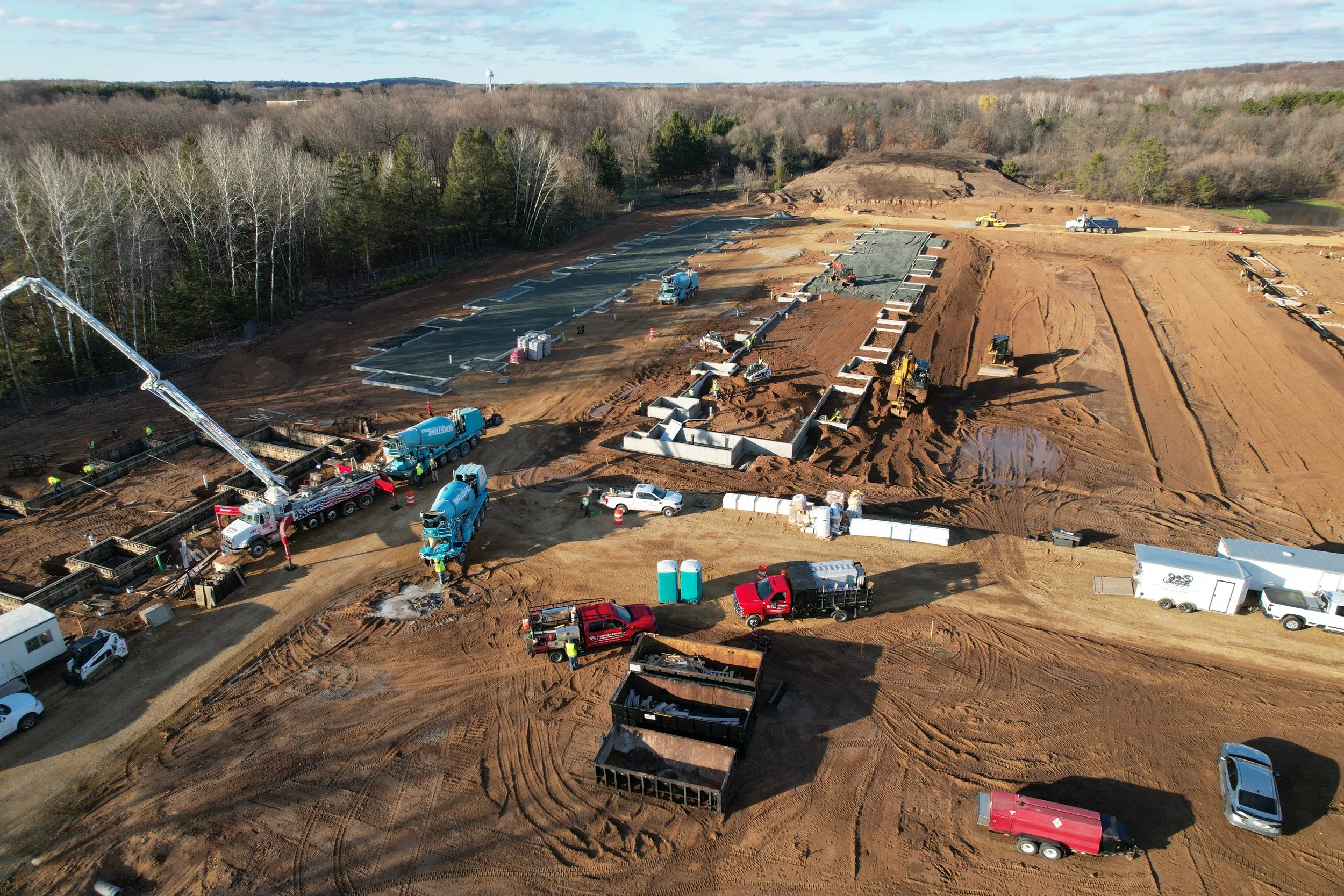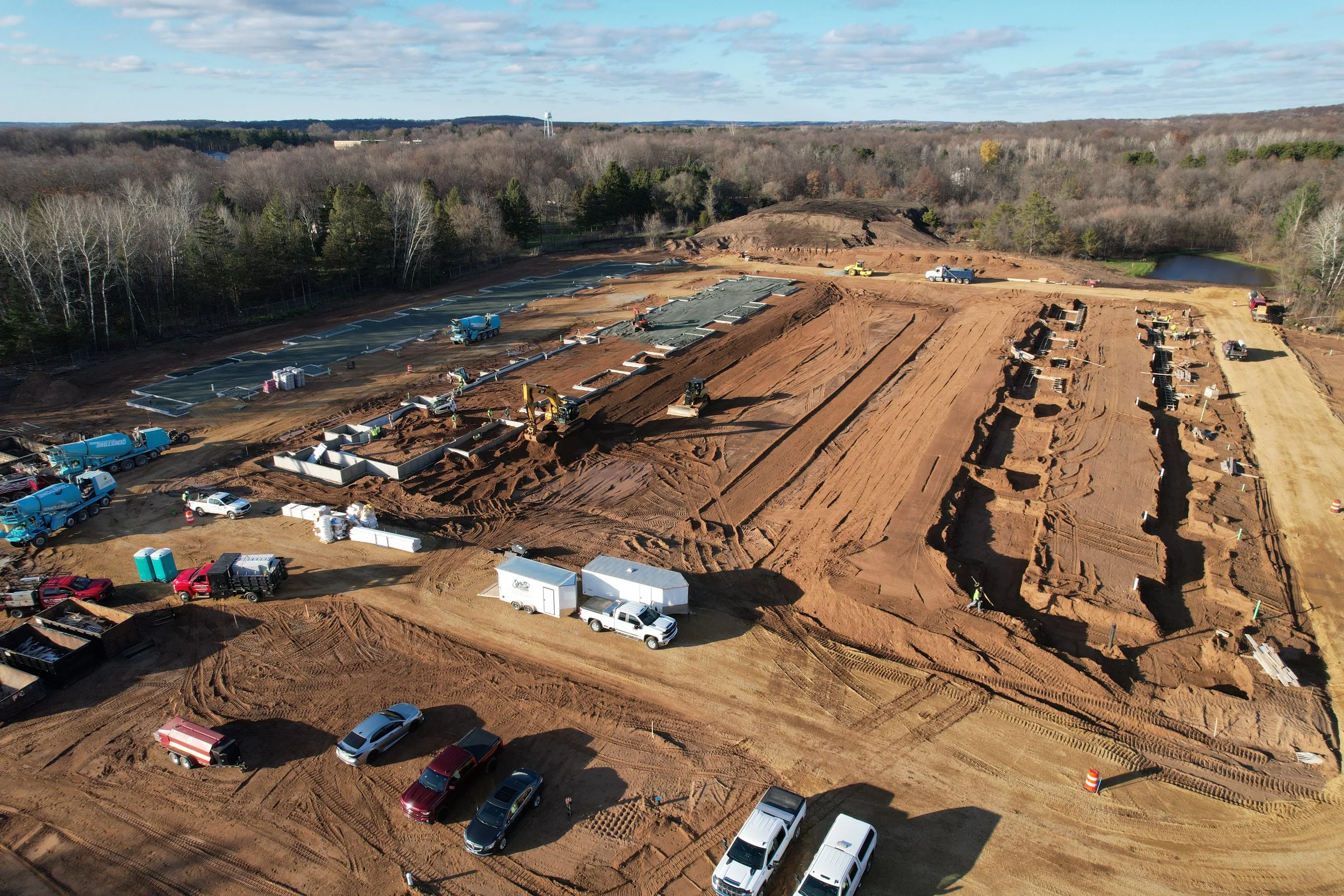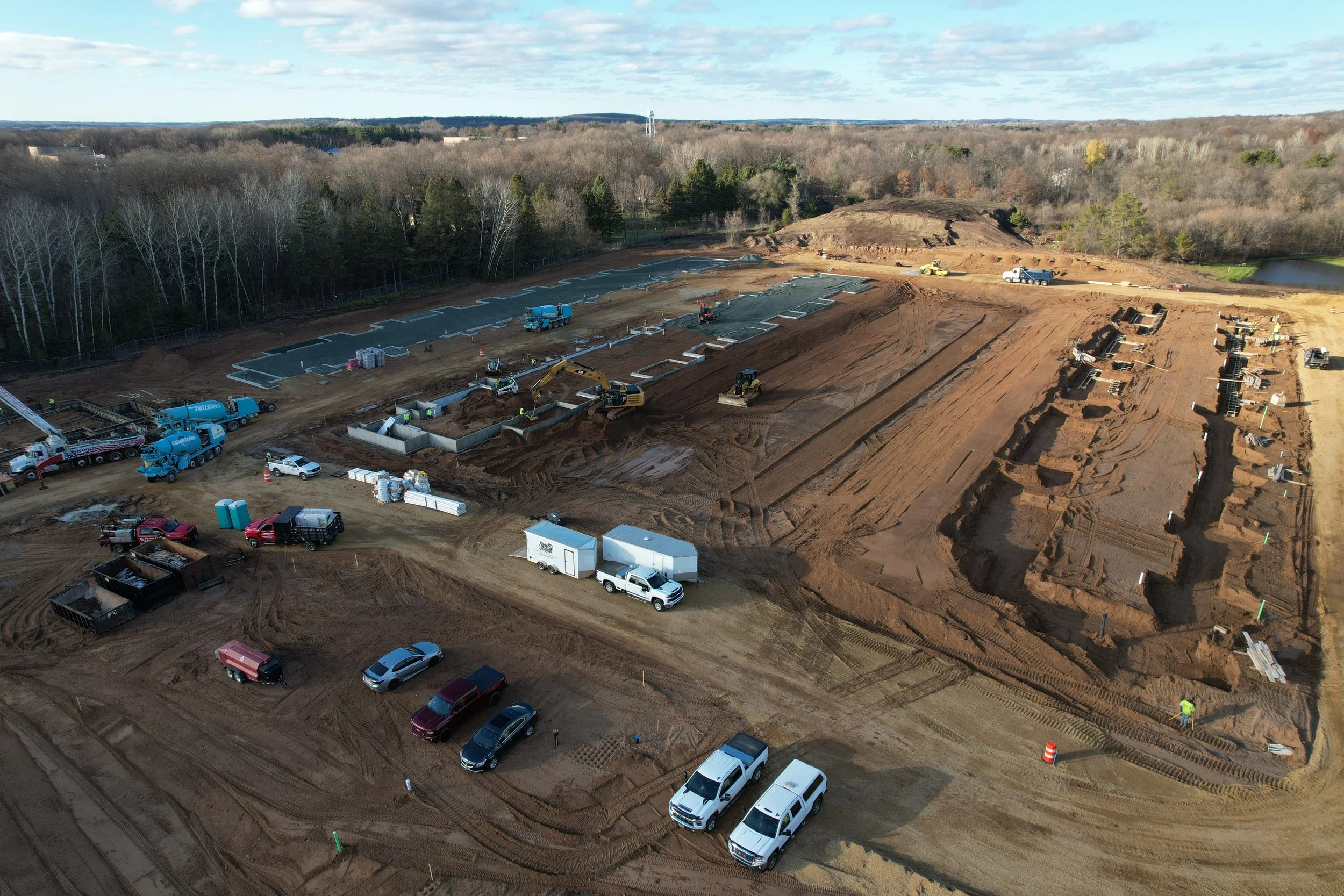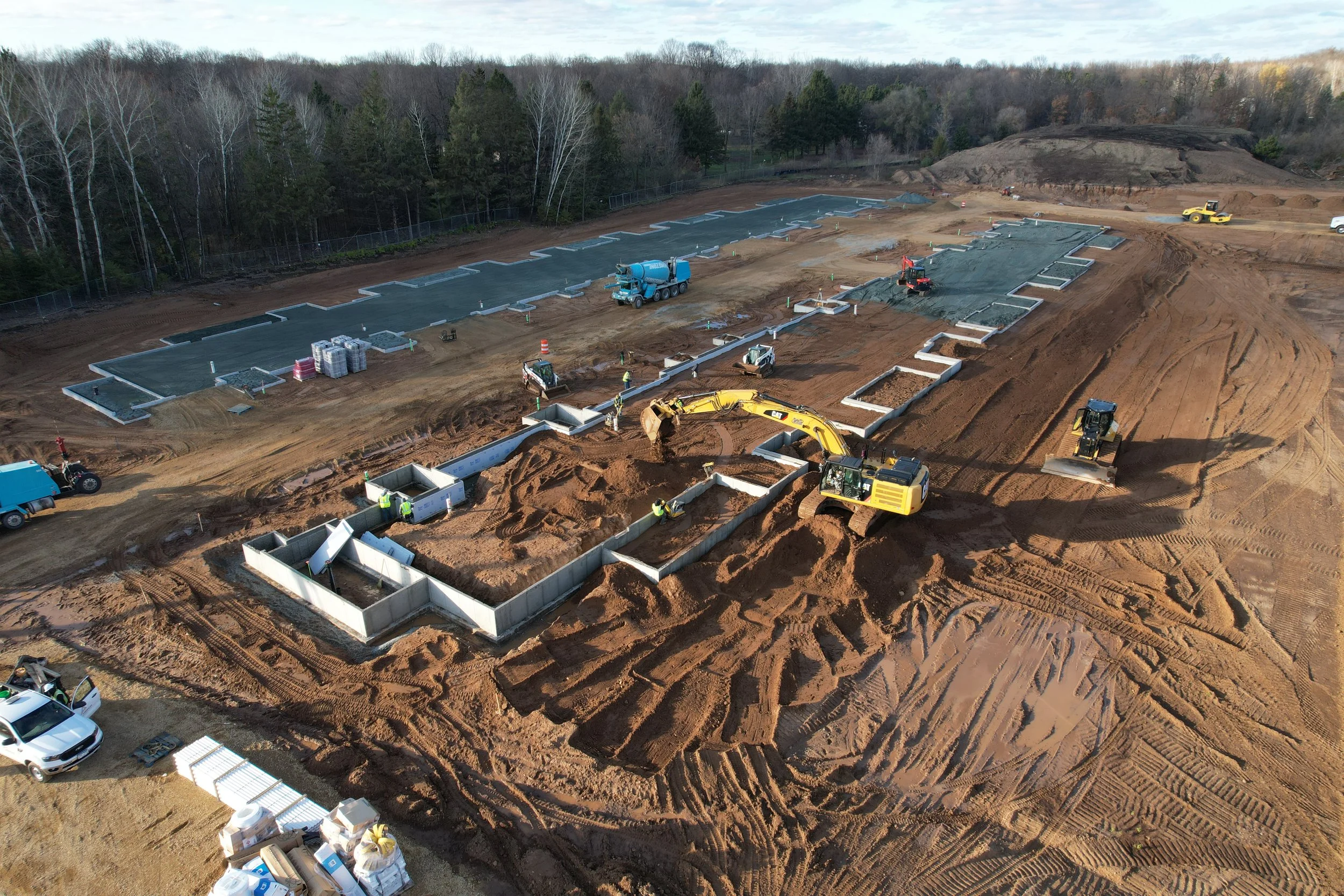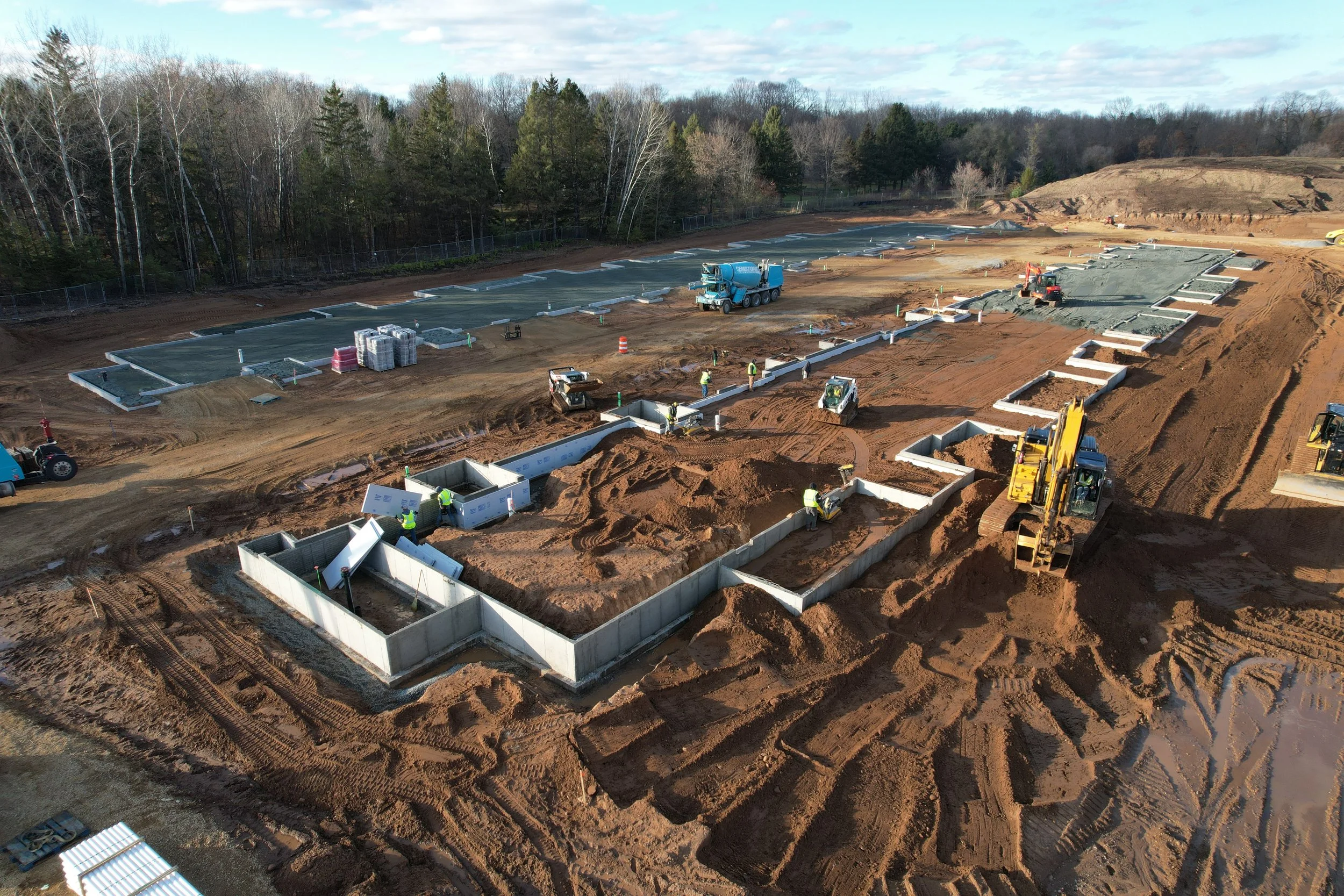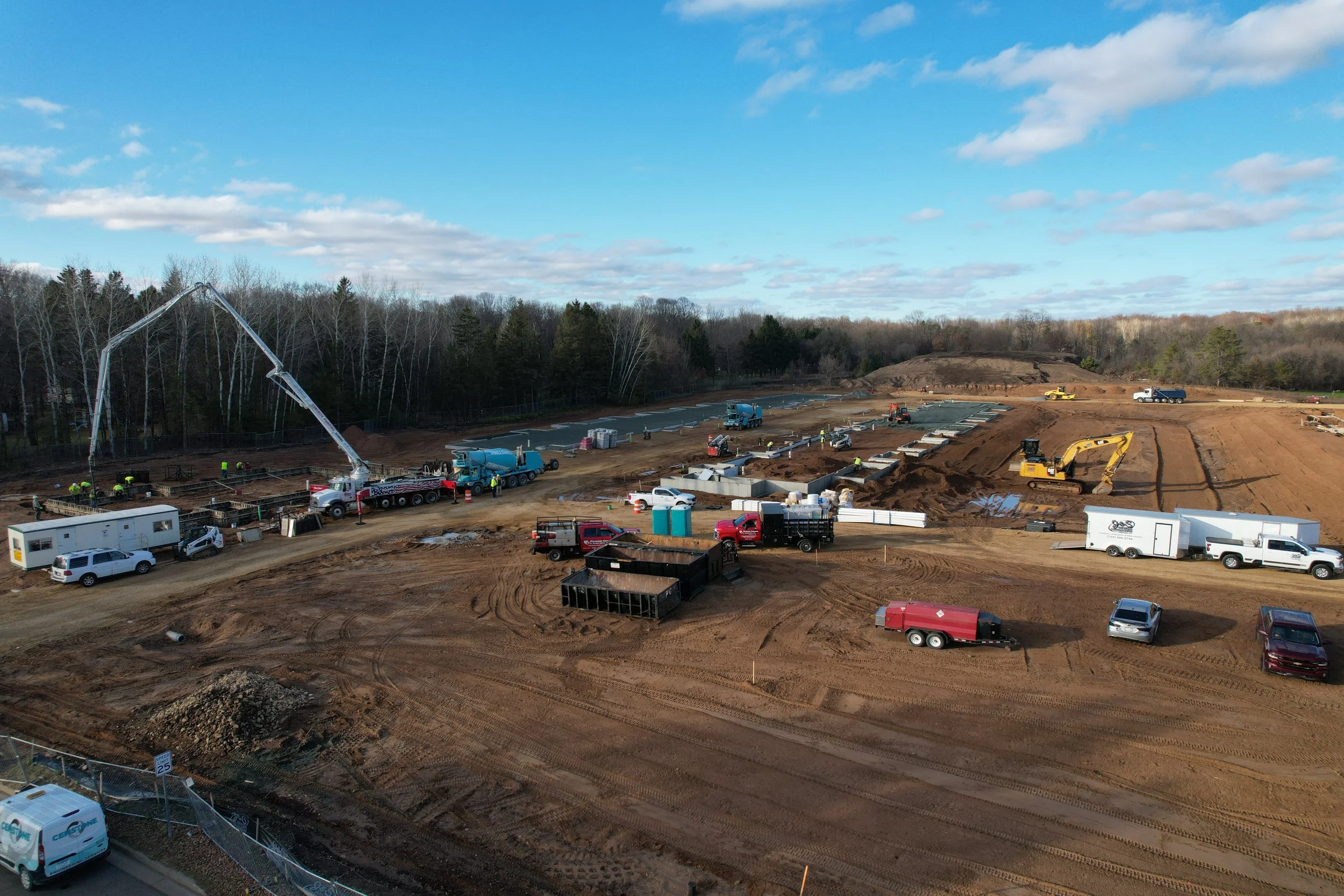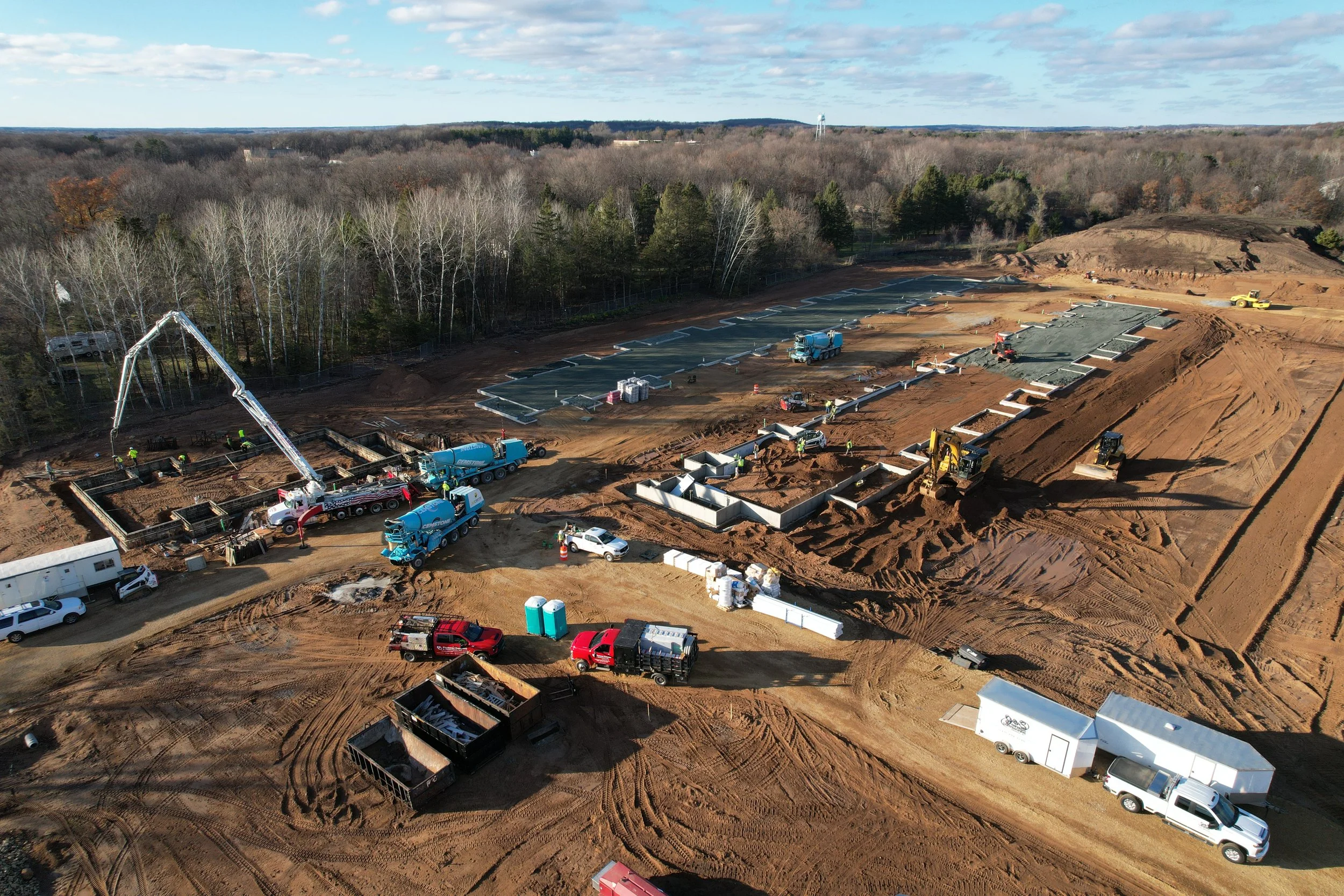
Building the Foundation for Maple Wood Cottages
At J & S General Contracting, we were proud to help lay the groundwork for Maple Wood Cottages, a thoughtfully planned residential development spanning 19.3 acres. Our earthwork team played a key role in transforming the site into a safe, stable, and build-ready environment for homes, roads, utilities, and green spaces.
From removing unstable soils to shaping the land for proper drainage, every step was handled with care and precision. We excavated and graded the site to meet strict engineering standards, ensuring long-term durability and structural integrity for future residents.
We also implemented a full range of erosion control measures to protect nearby lakes, streams, and wetlands—because building responsibly means caring for the environment too. Our team followed Wisconsin DNR and EPA guidelines to keep the site safe and sustainable throughout construction.
Thanks to close coordination with other crews and careful planning, the project moved forward smoothly. As the earthwork phase wrapped up, the site was ready for the next chapter—bringing the Maple Wood Cottages community to life.
